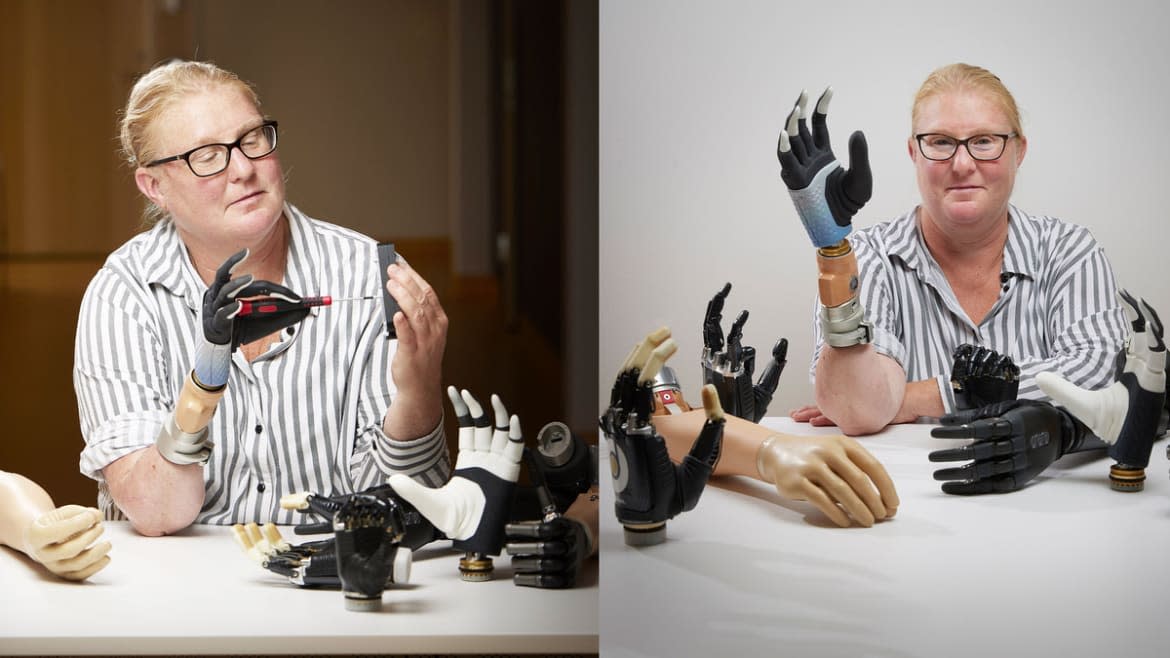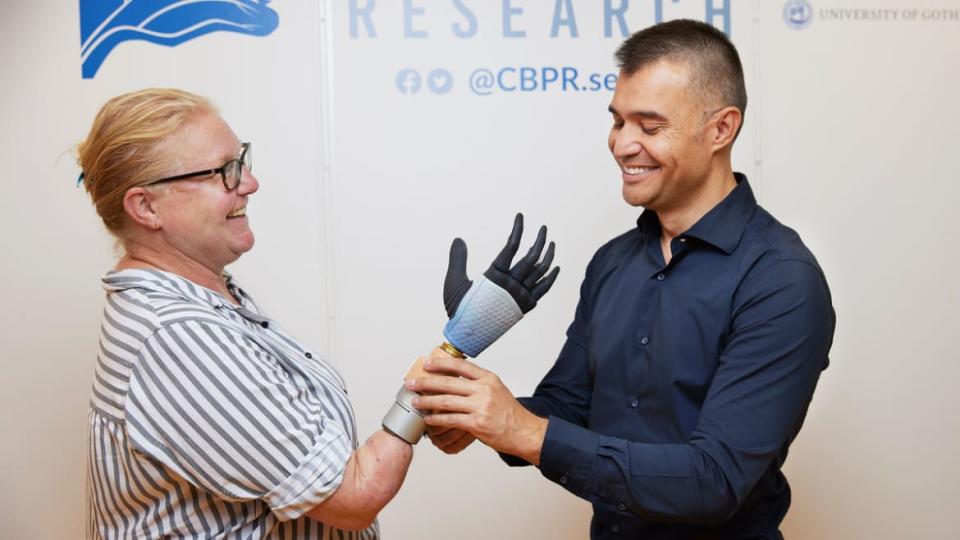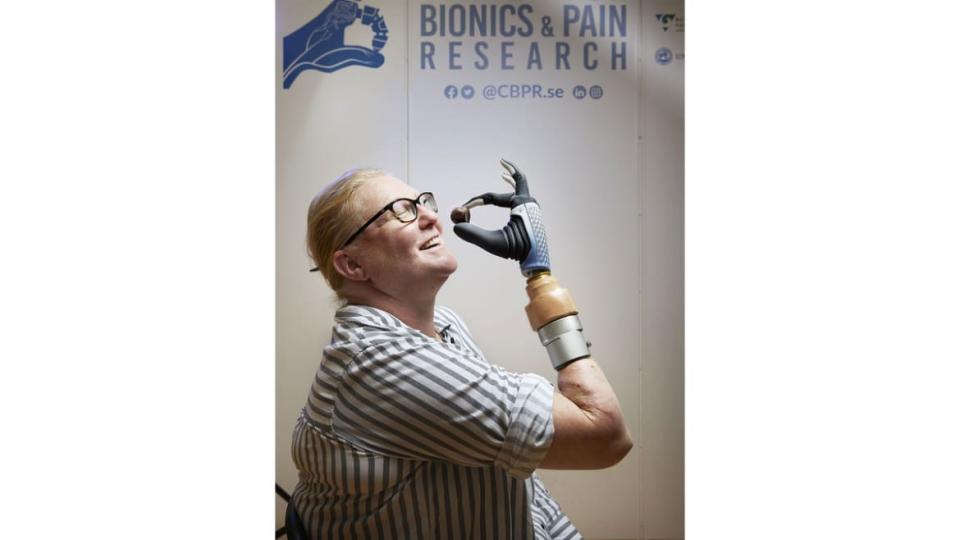Is This Bionic Hand the ‘Holy Grail’ of Prosthetics?

It’s been more than 20 years since Karin lost much of her right arm below the elbow in a farming accident. While she got medical attention, she was plagued for years with debilitating phantom limb pain—the sensation of feeling pain in a limb that is no longer there. It’s a phenomenon that often occurs with amputees, and can range from mild discomfort to agony.
For Karin, it was the latter. “It felt like I constantly had my hand in a meat grinder, which created a high level of stress and I had to take high doses of various painkillers,” she said in a statement.
However, that began to change more than three years ago when she signed up for the DeTOP project, a study into the creation of more sophisticated bionic limbs and prosthetics. From this project, researchers developed a bionic hand nicknamed Mia Hand for her that integrated directly into her skeletal and nervous system—allowing her greater control over the prosthetic while doing away with much of her phantom limb pain.
The bionic hand, which is detailed in a paper published Wednesday in the journal Science Robotics, utilizes a process known as osseointegration in order to connect the titanium limb directly to the bones of Karin’s forearm. The team also rearranged the nerves in her arms and implanted them with electrodes in order to attach the Mia Hand directly to her neuroskeletal system.
This integration with the nervous system is potentially the key to doing away with the phantom limb pain. Not only does it give Karin the ability to “feel” the objects she touches, it also gives the brain the impression that the limb is still intact—thereby preventing the phantom pains from occurring. According to the study, it also allows her to carry out 80 percent of her day-to-day activities.

The bionic hand utilizes a process known as osseointegration in order to connect the titanium limb directly to the bones of Karin’s forearm.
“Karin was the first person with below-elbow amputation who received this new concept of a highly integrated bionic hand that can be used independently and reliably in daily life,” lead author Max Ortiz Catalan, a neural prosthetics researcher at the Bionics Institute in Australia, said in a statement.
“We are steadily coming closer and closer to a ‘holy grail’ of bionic replacement—a dexterous prosthesis with intuitive, simultaneous, and effortless control as well as natural, spatially distributed somatosensory feedback,” neural prosthetics research Strahinja Dosen, who wasn’t involved in the study, wrote in an accompanying commentary.
Karin is just one of three patients who were involved in the DeTOP project—so there will likely be more developments in bionic limb technology from the researchers in the future. The bionic limb that she received is just the beginning when it comes to the ways that these emerging technologies are impacting the lives of amputees. “For me,” Karin explained, “this research has meant a lot, as it has given me a better life.”

This integration with the nervous system is potentially the key to doing away with the phantom limb pain. Not only does it give Karin the ability to “feel” the objects she touches, it also gives the brain the impression that the limb is still intact—thereby preventing the phantom pains from occurring.
Get the Daily Beast's biggest scoops and scandals delivered right to your inbox. Sign up now.
Stay informed and gain unlimited access to the Daily Beast's unmatched reporting. Subscribe now.

